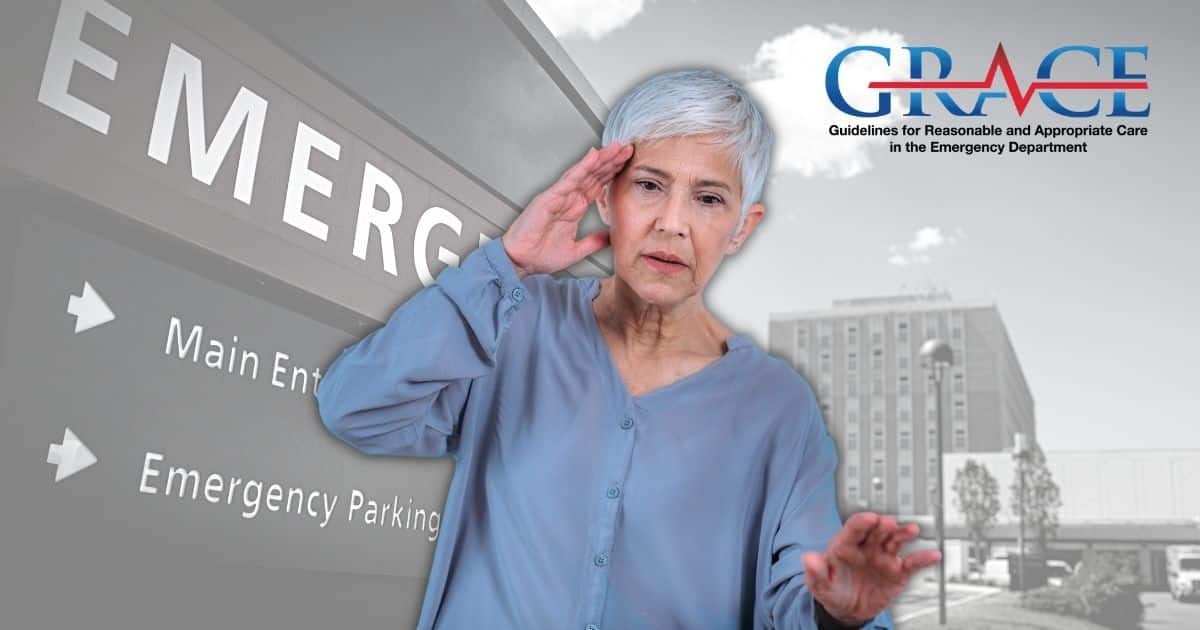The Society for Academic Emergency Medicine, in May of 2023, published GRACE-3. Grace is an acronym for Guideline for Reasonable and Appropriate Care in the Emergency Department. GRACE 1 and 2 offer guidelines for chest pain and abdominal pain. GRACE-3 addresses “acute vertigo and dizziness in the emergency department”.
This is a welcome, much needed, and frankly overdue development as historically patients arriving at the Emergency Department (ED) receive expensive low yield examinations and often incorrect diagnosis. This history is explored in detail in the guideline.
Personally, this has been a soapbox for me for several years, and I have posted on this topic, on this site, multiple times since 2015. I also understand that vertigo is just one of many things ED physicians deal with, and while effective management of dizzy patients is my professional priority, it has not been the priority of others.
GRACE-3 Guideline for Acute Vertigo
The GRACE-3 guideline reviews the literature, poses questions, and makes recommendations regarding Acute Vertigo Syndrome (AVS), triggered episodic vertigo, and spontaneous episodic vertigo. This is a precise, detailed, and in my opinion, excellent guideline, but it is necessarily quite long.
For those of you that want to get right to the main points, I will summarize below. For those of you that like to get into the weeds, download the guideline and spend a Saturday morning reading it, can view the full document here.
EVALUATION
- For AVS with nystagmus, do the HINTS -do not use brain CT
- Use finger rub to identify new onset unilateral hearing loss
- Observe gait instability in patient without nystagmus
- Do not use MRI unless HINTS points to central pathology or is unrevealing
- For spontaneous episodic vertigo, search for signs or symptoms of cerebral ischemia
- Do not use brain CT, but rather CTA or MRA on select patients
- For triggered episodic vertigo, do the Dix-Hallpike test
- Do not use brain CT, instead use MRI in patients with “atypical clinical features”
TREATMENT
- For AVS diagnosed as vestibular neuritis, consider short term steroids
- For patient diagnosed with posterior canal BPPV, treat with the Epley maneuver
EDUCATION
I am putting this last on the list, but it is the first and most important recommendation of the guideline. Emergency Department physicians should receive training in HINTS, Dix-Hallpike testing and Epley maneuvers.
This document is an important first step in that the Society of Academic Emergency Medicine acknowledges that 1. Current evaluation techniques are ineffective and expensive, 2. There is undeniable evidence that simple (with training) bedside tests are more accurate, faster, and cheaper than imaging in ruling out stroke, 3. Brain CT scanning is not helpful, but other imaging may be helpful in some patients, and 4. Training programs for ED physicians are needed and they work.
The next steps are acceptance and implementation of the guidelines recommendations from ED programs and physicians. Those of us focusing on vestibular management can move this along by developing and offering training programs to our local emergency departments.







